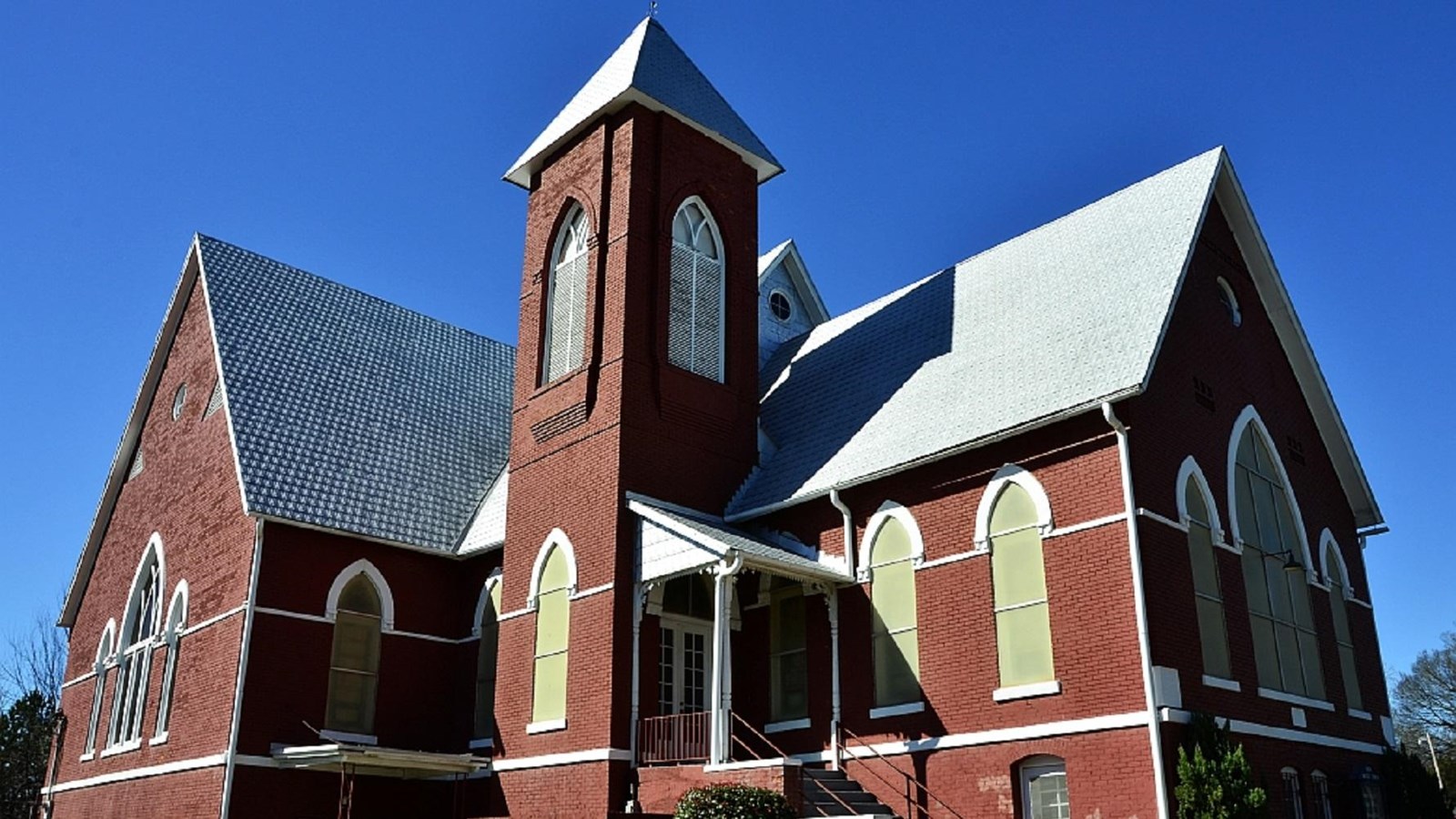Last updated: August 20, 2022
Place
Alabama: First Baptist Church

Photo by Richard apple, CC BY-SA 3.0, https://commons.wikimedia.org/w/index.php?curid=24478120
First Baptist Church, along with its close neighbor, Brown Chapel AME Church, played a pivotal role in the Selma, Alabama, marches that helped lead to the passage of the 1965 Voting Rights Act. The members of First Baptist Church allowed the Student Nonviolent Coordinating Committee (SNCC) to use their church as the planning site and organizational headquarters of the Selma campaign. First Baptist Church, constructed in 1894 in the Gothic Revival style by a local black architect, Dave Benjamin West, is considered one of the most architecturally significant late-19th-century black churches in the state. Despite a ban on protest marches by Governor George Wallace, on Sunday morning, March 7, 1965, about 600 black protestors gathered outside Brown Chapel to march from Selma to the state capital in Montgomery. Leading the march were the Southern Christian Leadership Conference's (SCLC) Hosea Williams and SNCC's John Lewis.
At the Edmund Pettus Bridge, six blocks from Brown Chapel, mounted troopers confronted the marchers and ordered them to disperse. The marchers stood their ground and the troopers advanced, billy clubs raised. Lewis fell, his skull fractured. Others fell, screaming, as white onlookers cheered. Then Sheriff Jim Clark's deputized posse charged the marchers, firing tear gas and swinging bullwhips and rubber tubing wrapped in barbed wire. That night, ABC interrupted its showing of the movie, Judgement at Nuremberg, to air footage of "Bloody Sunday." By morning, news of the event had spread to nearly every American household, and thousands of march supporters began to flock to Selma. On March 9, Martin Luther King, Jr., led a "symbolic" march to the bridge, and on March 21, after Governor Wallace's ban was overruled by Federal Judge Frank M. Johnson, Jr., King led the five-day march to the capital. Less than five months later President Johnson signed the Voting Rights Act.
Visit the National Park Service We Shall Overcome travel itinerary to learn more about the civil rights movement themes and histories. Also, be sure to check out Civil Rights subject site.
